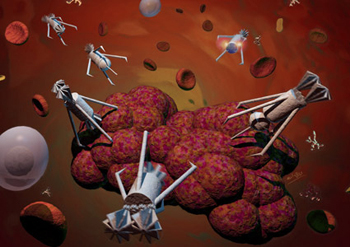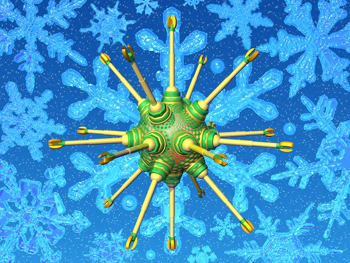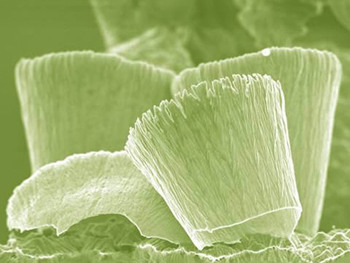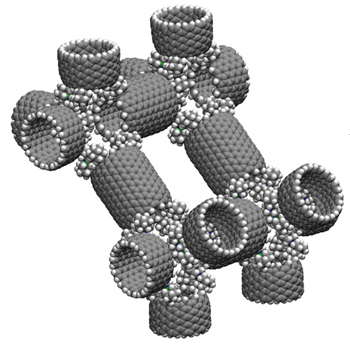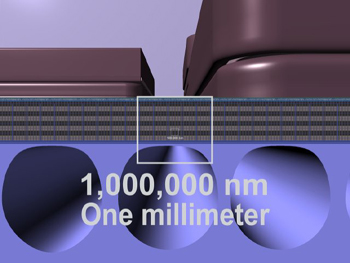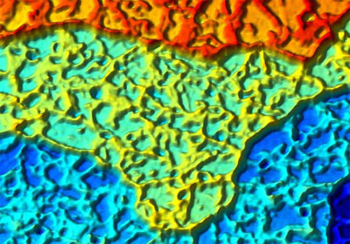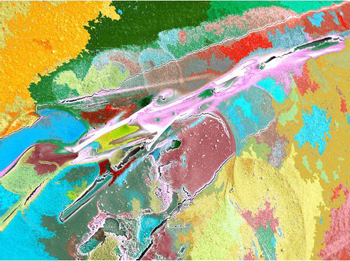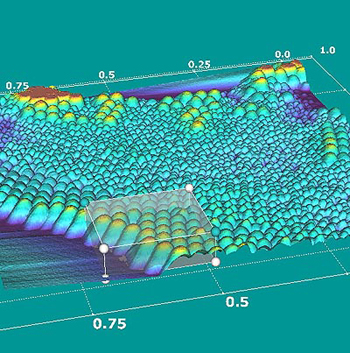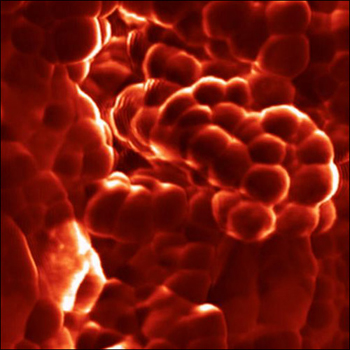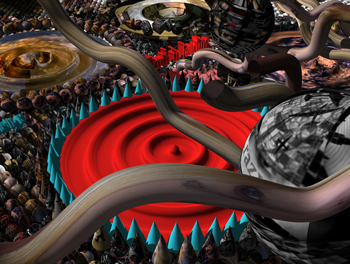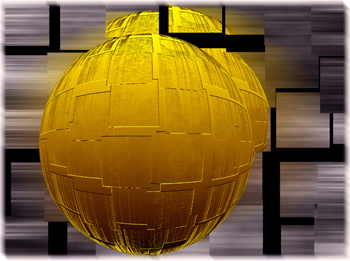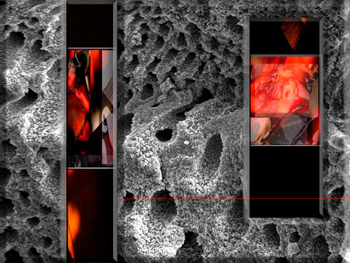Recent and noteworthy nanotube news includes the following.
SouthWest NanoTechnology (SWeNT), of Norman, manufactures high quality carbon nanotubes. With new OCAST funding and new manufacturing techniques developed at OU, SWeNT plans to diversify its manufacturing processes and mass produce a "commercial grade" of carbon nanotubes at a substantially lower price than is currently possible. Production volumes will increase more than 30 fold while costs are expected to fall by 90 percent.
RR: Predictions of production volume increases and cost decreases for nanotubes have been made for years. Unfortunately, and pretty much uniformly, they remain just predictions (there has been a slight decrease in price over the past 5 years). However, in this case I am hopeful that SWeNT will pull off the elusive nanotube two-fer since low-cost large-volume CNTs will enable massive change in every industry that creates products where weight and strength are paramount.
From:
Oklahoma awards state's first nanotechnology applications competition winnershttp://www.nanotech-now.com/news.cgi?story_id=21553
In a significant advance toward … nanotube-based electronics, researchers at the University of Illinois at Urbana Champaign (UIUC) have grown rows of perfectly aligned carbon nanotubes on quartz crystal and used these arrays to make transistors. The electrodes in these transistors border the nanotube rows so that thousands of nanotubes bridge the electrodes, increasing the current.
The nanotube transistors could be used in flexible displays and electronic paper. Because carbon nanotubes can carry current at much higher speeds than silicon, the devices could also be used in high-speed radio frequency (RF) communication systems and identification tags.
…to make good-quality transistors on a larger scale, they would need to find a better way to get rid of the metallic tubes or selectively grow semiconducting tubes. That, according to Javey, is the "last big key" for making nanotube electronics.
RR: And remains one of the major hitches. Current separation techniques simply do not produce "pure enough" batches of CNTs. Whether it’s this university or another (or one of the many businesses that product CNTs), expect to see nanotubes play a significant role in these areas in the near future (say 3 – 5 years) provided that the usual caveats are met: low cost and high production volumes, coupled with effective separation methods.
From:
A Breakthrough in Nanotube Transistorshttp://www.nanotech-now.com/news.cgi?story_id=21541
New research published in the March 19 issue of Applied Physics Letters suggests that carbon nanotubes may soon be integrated into ever-shrinking cell phones, digital audio players, and personal digital assistants to help ensure the equipment does not overheat, malfunction, or fail.
Using microfin structures made of aligned multiwalled carbon nanotube arrays mounted to the back of silicon chips, researchers from Rensselaer Polytechnic Institute and the University of Oulu in Finland have proven that nanotubes can dissipate chip heat as effectively as copper — the best known, but most costly, material for thermal management applications. And the nanotubes are more flexible, resilient, and 10 times lighter than any other cooling material available.
From:
Cool Findings: Nanotubes Could Improve Thermal Management in Electronicshttp://news.rpi.edu/update.do?artcenterkey=2044
For Florida State University researcher Okenwa Okoli, testing his latest research is vital. Okoli, an associate professor of industrial and manufacturing engineering in the Florida A&M University-Florida State College of Engineering in Tallahassee, Fla., and his research team at FSU's High-Performance Materials Institute have been working on bullet-proof body armor for U.S. military men and women.
Okoli and a former colleague, Jim Thagard, developed a composite manufacturing process to create lightweight body armor using nanotubes that protects a soldier's legs, arms and head. Metal traditionally has been used for such protective gear, but lightweight composites materials such as the ones produced by Okoli now can be used in place of heavier metals, he said.
RR: Noteworthy is the fact that their armor covers areas of the body not currently protected, which could go a long way towards reducing combat deaths and injuries.
From:
Researcher’s Light Body Armor May Save Soldiers’ Liveshttp://www.nanotech-now.com/news.cgi?story_id=21400
Carbon Nanotechnologies, Inc. (CNI) and Unidym, Inc. announced today that they have entered into a definitive agreement to merge the two companies. The transaction is expected to be completed in early April. The combined company, known as Unidym, will also have exclusive licenses to all the intellectual property in CNI's portfolio, for control of 59 U.S. issued carbon nanotube-related patents. While Unidym previously made carbon nanotubes for demonstration purposes, the merger will allow for mass production for commercial development of the ITO replacement. "This merger could also be the impetus for consolidation activity in the carbon nanotube space to accelerate."
RR: I agree. The battle over patent rights alone could spur that activity; many smaller producers of nanotubes may not be able to afford costly litigation, while their (potential) buyers can.
From:
Carbon Nanotechnologies, Inc. (CNI) to Merge with Unidymhttp://www.nanotech-now.com/news.cgi?story_id=21369
The Tokyo-based textile, chemicals and nanotechnologies firm plans to concentrate its efforts on the employment of its cup-stacked CNTs (CSCNTs) in the membrane electrode assembles of polymer electrolyte fuel cells (PEFCs), according to Japan Chemical Week.
RR: More good news for the green movement, and everything that breathes.
From:
GSI Creos to focus on carbon nanotube development for fuel cell applicationshttp://www.nanotech-now.com/news.cgi?story_id=21446
The assembly of nanoparticles along the external or internal surface of carbon nanotubes (CNTs) is of both fundamental and technological interest. Combining unique properties of CNTs and nanoparticles, the nanoparticle/nanotube composite structure attracts a broad range of advanced applications, including nanoelectronics, chemical and biosensors, catalysis and fuel cells. This so-called 'decoration' of CNTs has been used to increase the hydrogen storage capacity, to make nanotubes magnetic, or to grow secondary structures inside the nanotubes to increase the available surface for catalysis.
RR: one of the more noteworthy bits: "This paves the way to using carbon nanotubes as nanoscale biological probes for sub-cellular investigation." There are an increasing number of nanoscale solutions to the screening, diagnosis, monitoring and treatment of disease, many of which involve functionalized nanotubes.
From:
Nanotube biological probes for intracellular studieshttp://www.nanotech-now.com/news.cgi?story_id=21236
A novel approach to fabricating CNT networks are CNT aerogels. Aerogels are novel materials in their own right - a material derived from gel in which the liquid component of the gel has been replaced with gas. The result is an extremely low density solid. Fabricating aerogels with CNTs offers potential for improvement over current carbon aerogel technologies in device applications such as sensors, actuators, electrodes, and thermoelectrics.
From:
Carbon nanotube aerogelshttp://www.nanotech-now.com/news.cgi?story_id=21201
So far only limited data is available regarding carbon nanotube (CNT) toxicity. As a result still not much is known about their impact on biological systems including humans.
RR: It is worth noting that buckyball toxicity in soil has been determined to
not "have ill effects on soil or the microorganisms it contains." See
Nanotech threat exaggeratedFrom:
The ongoing challenge of determining carbon nanotube toxicityhttp://www.nanotech-now.com/news.cgi?story_id=21102
A Cambridge University-led team of scientists have successfully produced live video footage that shows how carbon nanotubes form. The nano-scale video observations mean that scientists will be able to better understand the nucleation of nanotubes and are therefore an important step on the route towards application.
RR: This should go a long way towards our understanding of how to functionalize and separate nanotubes (they come in many flavors, and are difficult to separate at this time), which will lead to lower consumer costs, which will lead to the use of nanotubes in more products, which will lead to…
From:
Nanotube formation captured on videohttp://www.nanotech-now.com/news.cgi?story_id=20908
For custom reports in your areas of interest, contact me at rocky at access-nanotechnology.com



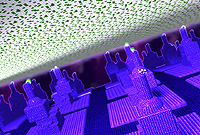
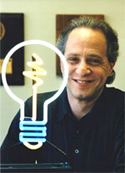 Ray Kurzweil is a 21st Century Renaissance man; inventor, entrepreneur, writer, futurist and much more.
Ray Kurzweil is a 21st Century Renaissance man; inventor, entrepreneur, writer, futurist and much more.